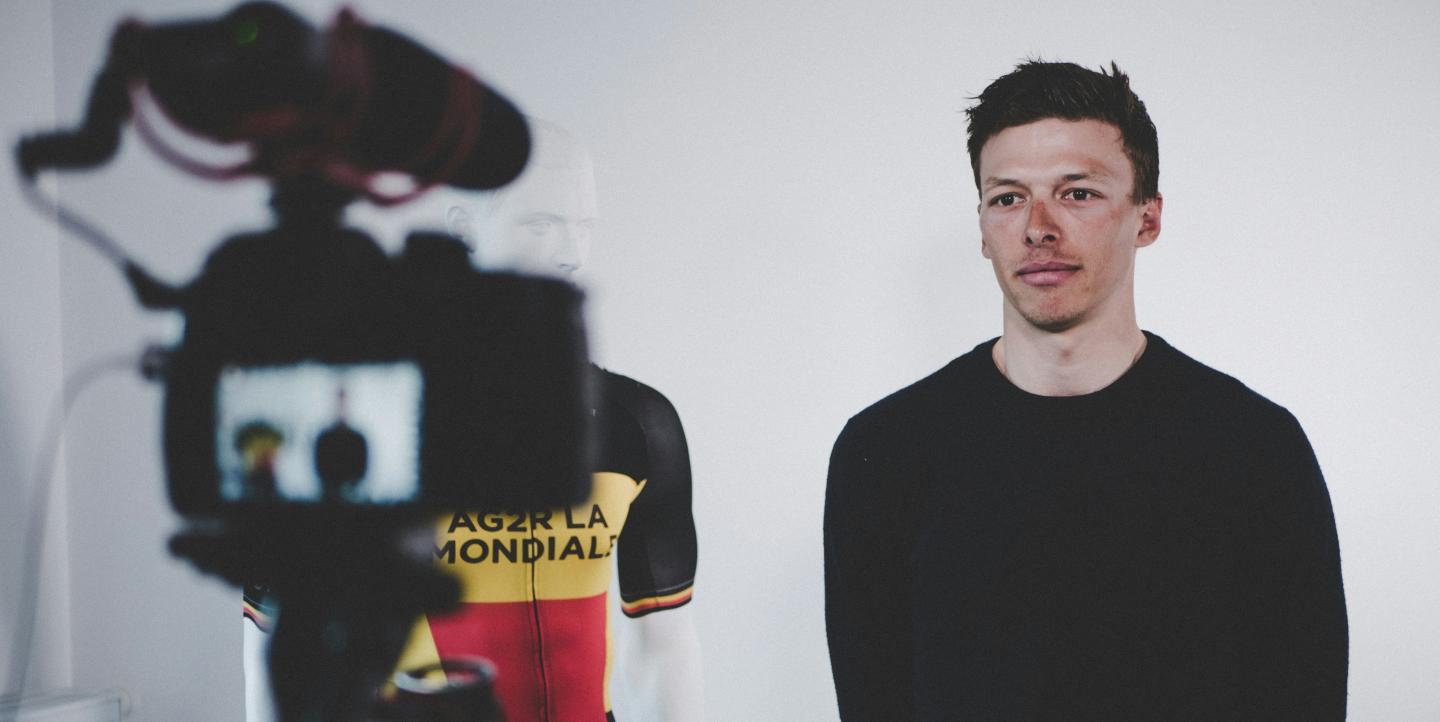A great video interview can be the heart of a powerful story, whether it’s a short news package or a feature length documentary. But setting up an on-camera interview takes preparation, finesse and a little troubleshooting.
As an Emmy Award-winning producer with over two decades of experience, I’ve had the privilege of conducting hundreds of on-camera interviews with a diverse range of individuals.
Here is some practical advice to make sure your video interview engages your audience and has real impact:
Before the interview
In the days leading up to your interview, take a deep dive into every aspect of your story. If this is a political story, know the facts, the history, the statistics and different viewpoints of the issue at hand. If it is a biography, know the key events in your subject’s life. If the interview is about an historical event, know the dates and details of how the event unfolded. If it is a true crime story, fully explore the timeline and characters involved.
I often prefer organizing my questions to align with the chronological order of events, working my way up to the present day. This adds structure to the interview and allows me to be better equipped for an informed conversation on the topic.
While you might talk with your subject a few days in advance, don’t pre-interview them too deeply. You’ll want your on-camera interview to feel spontaneous and authentic, so save the best questions for when your video camera is recording. As a general rule, your interview subject should not see questions in advance, although you can talk generally about the types of questions you may ask. This is especially true of an interview pertaining to ongoing news.
Try to have your subject wear clothes that are not distracting – for instance, avoid bright colors or stripes, herringbone designs, plaids, or other busy designs that can lead to the moiré effect, which causes shimmering, pulsating patterns to appear on screen.
If possible, go to the interview location the day before you film. Ask yourself, is the location too noisy? Can camera lights be plugged in if needed? If you’re filming a documentary, the property owner will also need to sign a location release, a legal document granting permission to film at that location.
The day of your interview
On-camera interviews are not natural for most people. Try to make your subject feel comfortable by creating a relaxed environment. Spend a few minutes on “small talk,” and have an unopened bottle of water ready for them – in short, treat your subject like an honored guest. You want them to feel calm, conversational and authentic during their interview.
If you’re filming a documentary, you’ll need to ensure legal consent for the use of an individual’s likeness or voice, so have your subject sign an appearance release before you start filming. Generally, news organizations that focus on reporting current events are exempt under fair use laws, and can use video and quotes without an appearance release.
The camera
For this article we’ll briefly cover a simple one-camera shoot.
Place your subject as far away as possible from walls or bookcases to avoid distractions. Look in your camera’s viewfinder (or a portable field monitor) and make sure there are no distractions behind your subject. Confirm objects like pictures or plants do not appear to protrude from their head.
As the interviewer, position yourself opposite your subject. Tell your subject to maintain eye contact with you, and not to look directly into the camera lens.
Sit close to the camera to maintain a nearly frontal view of your subject's face for your audience. If you sit too far away from the camera, your audience will often see a harsh profile view of your subject as they turn to look at you.
Ensure the height of your camera lens aligns with the subject’s eye level (you don’t want your audience to look up or down at your subject). Match your chair height to theirs. Ensure the subject's chair is comfortable, non-swiveling, and has a low back unseen by the camera.
If you're interviewing more than one person across separate interviews, apply the 'left-right' rule: position your camera so that half of your subjects conduct their interview looking camera left, and then reposition your camera so the other half looks camera right. This approach adds diversity to your shots across different interviews.
As the old proverb goes, “eyes are the windows to the soul.” Your subject shouldn’t wear sunglasses during the interview, and if they have normal eyewear, watch for any glare reflecting off their glasses.
Sound
Music should not be playing in the background during your interview. This has as much to do with licensing as it does with editing, as music on an audio track can cause major headaches when you’re editing a video.
Hide lavalier mics underneath shirt collars, or through a buttonhole on a shirt. If your audience sees a microphone during an interview, they’ll become more conscious of the artifice of filmmaking.
Be aware of any jewelry your subject is wearing, since it might make noise during the interview.
The interview
Have the camera recording when your subject first takes their seat. This can be useful in the edit room as b-roll footage.
Have your subject deliver concise, self-contained answers, since your questions will be removed in the edit room. To accomplish this, ask your subject to repeat your question in their answer. Give them an example: “If I ask you what color the sky is, and you say ‘blue,’ all we’ll hear is ‘blue.’ But if you say, ‘The sky's color is blue,’ you’ll have successfully put my question into your answer.”
Quiet on the set! Right before you're about to start asking questions, make sure the location is quiet, all talking has stopped, the music is turned off, and cell phones are on airplane mode.
Don’t ask your toughest questions first. Let your subject warm up a bit. Start by having your subject spell their name and tell you their official title. It helps break the ice, and it’s important to have their job title and correct spelling of their name on record. This information will later be useful when you’re editing and creating lower-thirds (identification graphics that usually appear in the lower third part of the screen).
Don’t talk or interrupt your subject while they’re answering your questions. Listen carefully, maintain eye contact, and occasionally nod your head to show that you understand what they’re saying and are listening – but say nothing. Remain silent for a few seconds after they finish answering each question. While it may feel unnatural, you’ll need clean, uninterrupted sound bites in the edit room.
To elicit more than a “yes” or “no” answer, ask your subject to “describe” or “explain” something. Don’t be afraid to have your subject elaborate on an answer that was unclear – you’ll want as few regrets as possible when editing later.
My final question is almost always the same: “is there anything you’d like to add that I didn’t ask you?” This has led to some wonderful answers by my subjects, usually revealing something that was on their mind but wasn’t covered in my questions.
Conclusion
With preparation, some problem solving, and a little human connection, you can transform a simple on-camera interview into an intimate personal encounter that can be pivotal to your story.
As you embark on your next interview journey, remember: every question holds the potential to unearth a hidden gem of insight.
Happy interviewing!
Photo by lucas clarysse on Unsplash.


